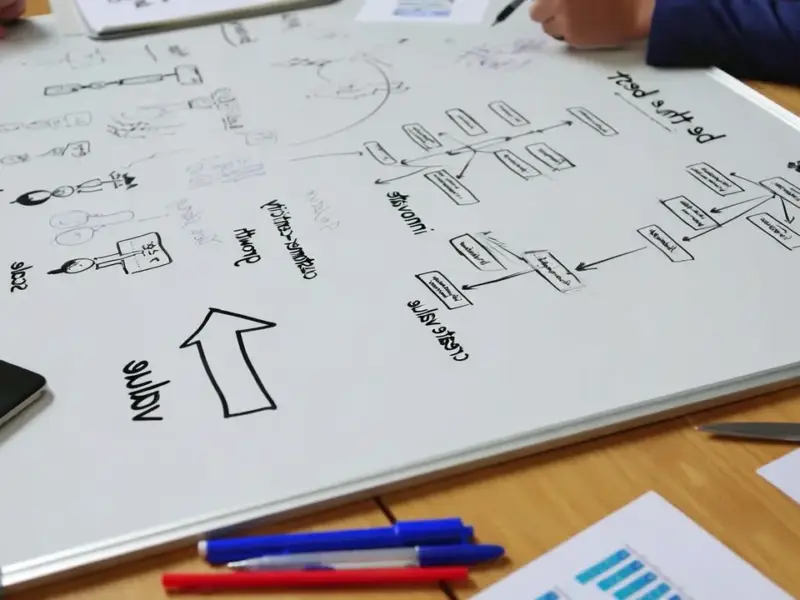According to Fortune, Airwallex has crossed $1 billion in annualized revenue as of October with a remarkable 90% year-over-year growth rate, according to cofounder and CEO Jack Zhang. The Singapore-based fintech unicorn, last valued at $6 billion in May, achieved this milestone just one year after reaching its first $500 million in annualized revenue, which initially took nine years to accomplish. With gross profit margins above 60% and a path to profitability by Q4 2025, Airwallex is expanding beyond its cross-border payments roots to compete directly with Ramp, Stripe, Mercury, Brex, and Revolut across business banking, spend management, and payment services. The company’s revenue is now diversified across multiple product lines, with business accounts comprising 34%, spend management 20%, and payments 30% of total revenue, while North America and Europe now contribute nearly 40% of revenue after being negligible just a few years ago. This rapid growth trajectory signals a significant shift in the global fintech landscape that warrants deeper technical and strategic analysis.
The Global Infrastructure Moat
Airwallex’s core competitive advantage lies in its decade-long investment in global financial infrastructure that few competitors can replicate quickly. Unlike U.S.-centric fintechs that built for domestic markets first, Airwallex designed its architecture from day one to handle the complexities of cross-border transactions, multi-currency operations, and diverse regulatory environments. The company’s global network of licenses and regulatory approvals represents a significant barrier to entry that provides both technical and compliance advantages. This infrastructure-first approach enables Airwallex to offer what Zhang calls “foundational infrastructure for global agentic payments” – essentially creating a unified layer that abstracts away the complexity of international money movement, currency conversion, and local compliance requirements. The technical challenge here is immense, requiring real-time integration with dozens of payment rails, banking systems, and regulatory frameworks across multiple jurisdictions.
Beyond the Single-Product Wedge
Most fintech companies follow the “wedge strategy” – using one core product to gain initial traction before expanding into adjacent services. Stripe began with payment processing, Ramp with corporate cards, and Mercury with business banking. Airwallex’s diversified revenue distribution (34% business accounts, 20% spend management, 30% payments) represents a fundamentally different approach that reflects the complex needs of globally operating businesses. The technical architecture required to support this multi-product strategy is significantly more complex than single-focus platforms. It requires building interconnected services that share data, authentication, and financial infrastructure while maintaining security isolation between different product domains. This approach creates stronger customer lock-in but demands sophisticated API design and microservices architecture to prevent the system from becoming an unmaintainable monolith.
The Technical Challenges of Global Scale
Building a truly global financial platform presents unique technical hurdles that domestic-focused competitors rarely encounter. Airwallex must maintain real-time synchronization across multiple time zones, handle currency fluctuations during transaction processing, and ensure compliance with diverse regulatory requirements simultaneously. The company’s infrastructure must process transactions across different banking hours, holiday schedules, and settlement cycles while maintaining consistent performance. Additionally, the cross-border payment engine must optimize routing decisions based on cost, speed, and reliability factors that vary by corridor and transaction size. These technical complexities explain why many fintechs remain regionally focused despite the apparent market opportunity in global expansion.
AI and Blockchain: Strategic Bets vs. Practical Reality
Zhang’s comments about AI agents and stablecoins reveal a pragmatic approach to emerging technologies that contrasts with the hype-driven investments of many competitors. His vision for “global agentic payments” suggests building infrastructure where AI systems can autonomously execute financial transactions across borders – a technically ambitious goal requiring robust identity verification, fraud detection, and compliance systems. Meanwhile, his skepticism about blockchain for B2B payments reflects the practical reality that existing payment rails continue to evolve and improve, reducing the immediate need for blockchain solutions. The company’s hiring of stablecoin developers represents a hedge rather than a core strategy, acknowledging the technology’s potential while recognizing current limitations in merchant adoption and regulatory clarity.
Strategic Market Positioning and Competitive Dynamics
Airwallex’s deliberate focus on globally-minded businesses rather than domestic-only companies creates a distinct market position that avoids direct competition with well-funded U.S. rivals on their home turf. This strategy leverages the company’s natural advantages while acknowledging the challenges of displacing established players in mature markets. The technical implication is that Airwallex can optimize its platform for the specific use cases of international businesses – multi-currency treasury management, cross-border payroll, global vendor payments – rather than trying to be everything to everyone. This focused approach allows for more specialized feature development and potentially better unit economics, as evidenced by the company’s 60%+ gross margins and path to profitability.
Future Outlook and Scaling Challenges
As Airwallex continues its rapid growth, several technical and operational challenges will emerge. Scaling a globally distributed financial platform requires sophisticated monitoring, incident response, and disaster recovery capabilities across multiple regions. The company’s ambition to build AI agent infrastructure for payments introduces additional complexity around security, accountability, and error handling in autonomous systems. Furthermore, maintaining consistent product quality and performance while expanding into new markets will test the company’s engineering processes and organizational structure. The transition from private to public markets, whenever it occurs, will bring additional scrutiny of the company’s technical architecture, security practices, and operational resilience.



